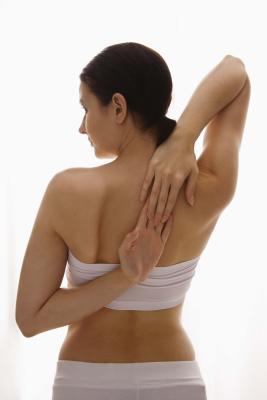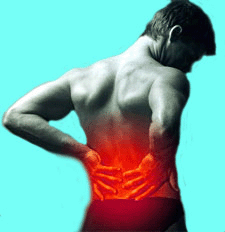 There are more days lost in the workforce with back pain than any other ailment, including the flu.
There are more days lost in the workforce with back pain than any other ailment, including the flu.
Back pain can be caused by the simplest movement like tying your shoelace or even sneezing. When the muscles in your back go into spasm, you often cannot move for a few minutes. Then we are inclined to lie down or go to bed but this can make things worse.
You should stay mobile, even if you move slowly, and do gentle stretches, otherwise the muscles, especially in the lower back, de-condition quickly – the opposite of what you want.
Stretch your hamstrings hips and glutes very gently, holding each movement for 15 seconds, doing each movement three times – don’t over-stretch. When you feel pain you should stop.
Lower back pain can lock all the muscles along the lower back in parallel with the hip bone. Most people with the problem are normally very tight in the hamstrings and inflexible in the hip area.
When back pain occurs you often hear people complain that they have a slipped disc. Generally, this not the case and the so-called slipped disc is associated with sciatica, which is a severe pain shooting down your hip to your knee and even to your toe.
Knotted
Back spasm is different. And it’s not only the unfit who suffer back pain, even top athletes can suffer spasms, particularly runners who cover long distances. As the front thigh muscles get stronger, it often can happen that the hamstrings and thigh biceps get tighter and shorter. Continuous stretching and ice packs are needed.
We often only take notice of our muscles when something happens and then, unfortunately, it’s too late. The secret is to get the back muscles strong and the hip flexors mobile and keep everything loose. Have regular deep massage to undo all the knotted areas in your lower back and hips.
The old treatment was to lie on a wooden board or stay in bed. Now experts agree that even to treat chronic back pain, you should do hard exercise using weights with a series of special exercises designed to aligned the body, strengthen the tummy, work the hips and strengthen all flabby areas. For example, for every extra inch you have on your waist, this puts 10lb of pressure on your lower back, so if you have a 40in waist this could mean 60lb pressure pulling you forward.
We successfully treat many people with back problems which could have been bothering them for years and after six weeks of corrective exercises there is a huge improvement and often avoid surgical input.
 What aggravates back pain?
What aggravates back pain?
1. The wrong position of your car seat or chair at work. If your knees are higher than your hips, this can cause lower back pain. Most car seats don’t tilt forward to adjust your position. To correct this, a simple back roll at the crease of your back can improve the problem.
2. Weak hips, abdominals and legs – the less tone the muscles have, the more prone you are to back pain. Often one strong muscle is supporting many – so try to get strong all over.
3. Walking in bad shoes or walking with both feet going in the opposite direction. You’re going straight but your foot is going the opposite direction putting strain on your muscles to compensate the movement. Also if the heel is too low and you tilt forward, spasm can occur. Don’t wear flat shoes if you have a problem.
4. Don’t do the breast stroke swimming – it will make things worse as you will arch your back. Avoid some yoga movements, including the cobra, plough and inverted effect. An arched back puts too much pressure on the L4 and L5 discs in the lower back.
Source: www.herald.ie; Pat Henry; May 13, 2013.







